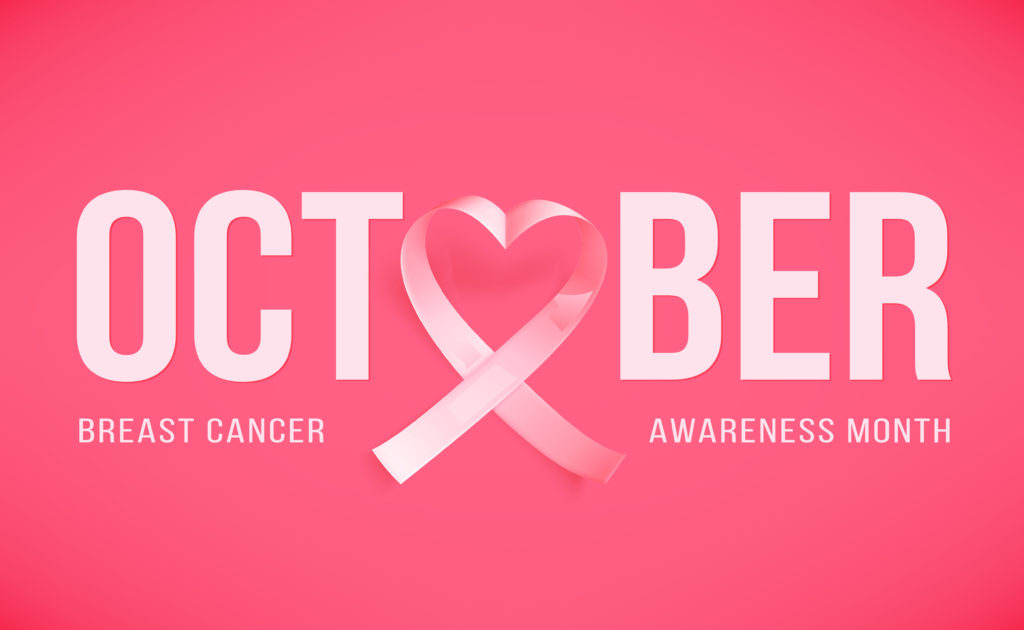
October is Breast Cancer Awareness Month and a great time to spread awareness about the importance of breast health. Learn about breast cancer facts, early detection, common warning signs, screening options, and patient resources, so you can be proactive with your breast health.
Breast Cancer Awareness Facts:
- Breast cancer is one of the most common and well known cancers diagnosed in the United States.
- Occurs in BOTH men and women, but is more common in women.
- In 2020, is it estimated that 276,480 new cases of breast cancer will be diagnosed in women.
- Most breast cancers are found in women older than 50, but 10% are found in women younger than 45.
- With increased awareness and research, there are many advances in how to treat breast cancer.
- Early detection is key because there are more treatment options available, increased survival, and improved quality of life.
Breast Health and Early Detection:
I cannot stress enough how important early detection can be in diagnosing and treating breast cancer. Sometimes there are no symptoms, or by the time symptoms appear, cancer may have begun to spread. That’s why it is important to see your provider right away if you notice something concerning.
Learn the Early Warning Signs of Breast Cancer:
When breast cancer is caught early, there are more treatment options available and a better chance for a cure. Not all changes, pains, or lumps will be cancerous, but you should always talk to your doctor to schedule an evaluation.
Warning signs include:
- A lump in the breast or underarm
- Spontaneous or bloody discharge from the nipple
- Retraction or indentation of the nipple area
- Change in the size of a breast
- Flattening or indentation of the skin covering the breast
- Redness or pitting of the breast skin, similar to that of an orange
- Crustiness or rash of the nipple or areola
If you notice any of these signs, schedule an appointment at the Margie Petersen Breast Center at Providence Saint John’s Health Center. Our breast health team is able to fully evaluate any breast problems in one day.
Breast Cancer Screenings:
Screening for breast cancer means checking the breasts for cancer before there are any signs or symptoms. The benefit of screening is finding the cancer early when it is easier to treat. Talk to your doctor to determine which screening tests are best for you and when you should have them.
What are the Different Ways to Evaluate Your Breasts?
Mammogram
An x-ray of the breast is called a mammogram. Mammograms are the best way to detect cancer early and should be used as the first step in screening for breast cancer. Mammograms are able to look for and evaluate a new suspicious finding. They may also be used to follow someone with a personal history of breast cancer.
Breast Ultrasound
Ultrasound uses sound waves to produce images of internal structures within the breast. An ultrasound can help determine if an abnormality is likely to be a fluid filled cyst or a solid mass which may be benign or cancerous.
MRI
A breast MRI uses magnets and radio waves to take pictures of the breast. MRI may be recommended when more information than a mammogram, ultrasound, or clinical exam can provide. MRI is also used along with mammograms for women who are considered high risk for developing breast cancer.
Biopsy
A biopsy is a procedure that will remove a small sample of cells or tissue which will be reviewed under a microscope to determine if cancer is present.
Clinical Breast Exam
Doctors will use their hands to feel for any lumps or other changes. Learn more about clinical breast exams.
Breast Self-Exam
Become familiar with your own breasts by conducting self-exams on your own. If you notice any lumps, pain, or changes be sure to talk to your doctor.
Learn more about breast cancer screenings by watching our webinar, Breast Cancer Screenings: Method and Myths.
Genetics and Family Testing:
Although all cancers result from genetic errors (also called mutations), most cancers develop over time as multiple mutations accumulate in single cells. This can be due to things like aging or the environment. However, in some families, an inherited risk factor can be identified that causes increased cancer risk. This is true in at least 10% of breast cancers. The most common mutations are BRCA1 and BRCA2. If someone inherits such a mutation, the risk of developing breast cancer is much higher than for the average man or woman. Inherited risk can come from either side of the family, and the risk on each side is considered separately.
Having a close relative with breast cancer, such as a mother or sister, increases your chance for developing breast cancer.
Learn About Genetics and Family Testing
Experiencing symptoms or have concerns?
If you have any questions or concerns about breast cancer or breast health, please schedule an appointment with one of our providers today.
Sign up for our breast cancer webinars!
The Margie Petersen Breast Center will be hosting webinars, presented by the Irene Dunne Guild, throughout the month of October. Funding for our educational webinars are generously provided by the Ken Johnson Family in memory of Joan Brierton Johnson.
Sign up, watch, and share our complimentary webinars to help us spread awareness!

